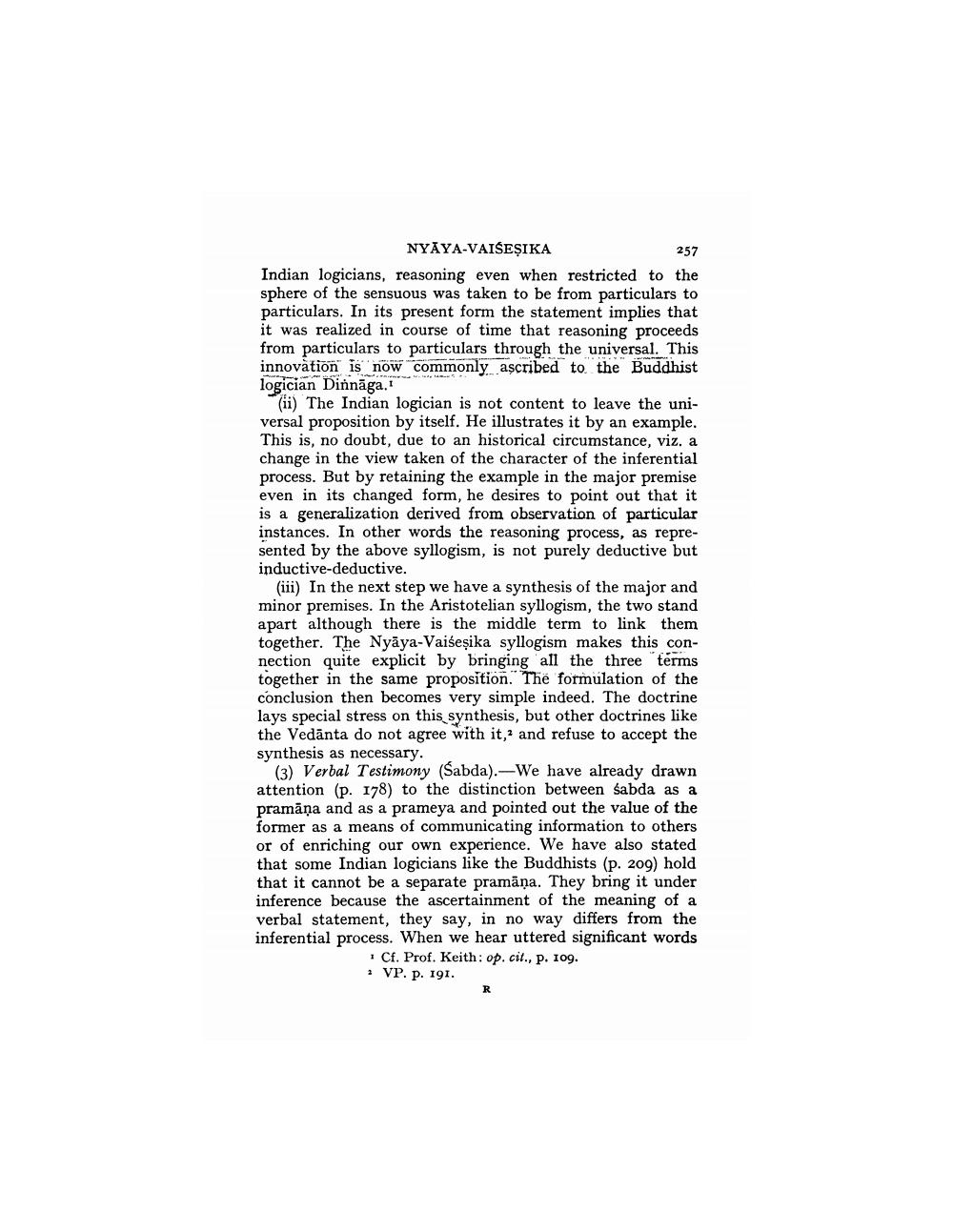________________
NYAYA-VAISESIKA
257 Indian logicians, reasoning even when restricted to the sphere of the sensuous was taken to be from particulars to particulars. In its present form the statement implies that it was realized in course of time that reasoning proceeds from particulars to particulars through the universal. This innovation is now commonly ascribed to the Buddhist logician Dinnāga.
(ii) The Indian logician is not content to leave the universal proposition by itself. He illustrates it by an example. This is, no doubt, due to an historical circumstance, viz. a change in the view taken of the character of the inferential process. But by retaining the example in the major premise even in its changed form, he desires to point out that it is a generalization derived from observation of particular instances. In other words the reasoning process, as represented by the above syllogism, is not purely deductive but inductive-deductive.
(iii) In the next step we have a synthesis of the major and minor premises. In the Aristotelian syllogism, the two stand a part although there is the middle term to link them together. The Nyāya-Vaiseșika syllogism makes this connection quite explicit by bringing all the three terms together in the same proposition. The formulation of the conclusion then becomes very simple indeed. The doctrine lays special stress on this synthesis, but other doctrines like the Vedānta do not agree with it, and refuse to accept the synthesis as necessary.
(3) Verbal Testimony (Sabda).-We have already drawn attention (p. 178) to the distinction between sabda as a pramāna and as a prameya and pointed out the value of the former as a means of communicating information to others or of enriching our own experience. We have also stated that some Indian logicians like the Buddhists (p. 209) hold that it cannot be a separate pramāna. They bring it under inference because the ascertainment of the meaning of a verbal statement, they say, in no way differs from the inferential process. When we hear uttered significant words
Cf. Prof. Keith: op. cit., p. 109. 1 VP. p. 191.




